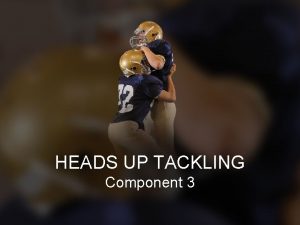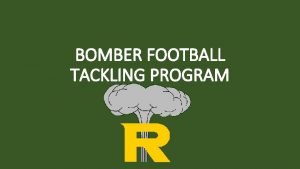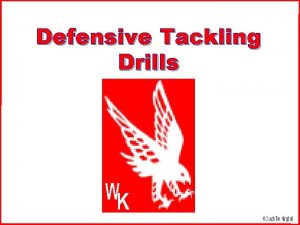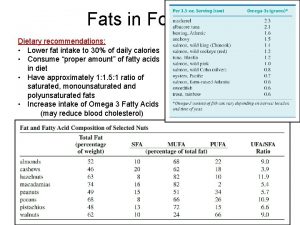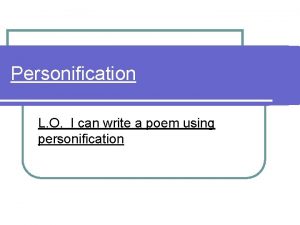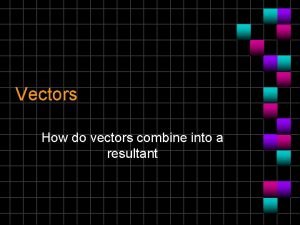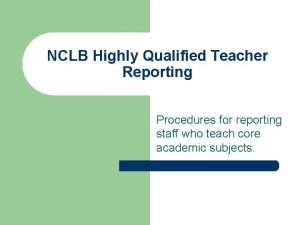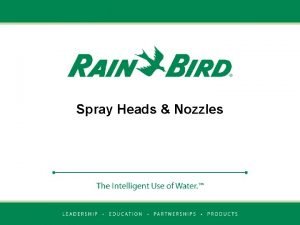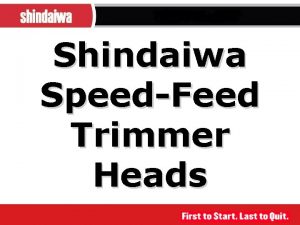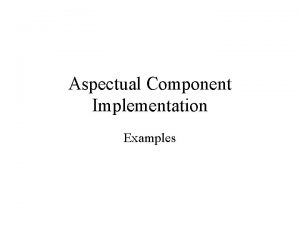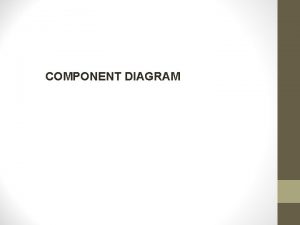HEADS UP TACKLING Component 3 TERMINOLOGY As a
















- Slides: 16

HEADS UP TACKLING Component 3

TERMINOLOGY As a coach, our words convey powerful messages and tell young players what is important What are you actually telling your player to do? Point of contact Consistent terminology leads to better teaching

PSYCHOLOGY OF BUILDING CONFIDENCE • Some youths are instinctively aggressive and eager for contact; many more have some initial reservation – The initial fear is real • How to overcome the fear • Confidence comes through repeated success • Look for behavior signs of youngsters lacking confidence • Kids play sports for fun • Levels of Contact

LEVELS OF CONTACT AIR Players run a drill unopposed without contact. BAGS CONTROL THUD LIVE ACTION Drill is run against a bag or another softcontact surface. Drill is run at assigned speed until the moment of contact; one player is pre-determined the “winner” by the coach. Contact remains above the waist and players stay on their feet. Drill is run at assigned speed through the moment of contact; no predetermined “winner. ” Contact remains above the waist, players stay on their feet and a quick whistle ends the drill. Drill is run in gamelike conditions and is the only time that players are taken to the ground.

TACKLE PROGRESSION BREAKDOWN BUZZ HIT POSITION SHOOT RIP

POINTS OF CONTACT & TERMINOLOGY The point of contact is the area of the tackler that makes contact first with an opposing ball-carrier USA Football teaches the shoulder tackle as part of its Heads Up Tackling program The defender “slides” his head to the side of an oncoming ballcarrier as he initiates contact


BREAKDOWN • Knees bent, feet shoulder-width apart, upper body in a 45 -degree lean, chin up and over toes • Weight on balls of feet (not toes) • Players gather themselves in a breakdown position when “buzzing” the feet Teaching progression: FEET SQUEEZE SINK HANDS

BUZZ • Quick, choppy, heel-to-toe steps to bring the body under control while continuing to gain ground • Once within “striking distance” of ball-carrier, buzz feet to widen base and sink the hips • Keep original 45 -degree lean

HIT POSITION • Body position at moment of impact • After closing to the ball-carrier, take a short downhill power step • Have a bend in both knees, with back foot directly under your hips • Head and eyes up, shoulders square to contact

SHOOT • Forcefully explode hips open and upward • Use large muscle groups of lower body to produce a powerful tackle • To finish, continue to the drive legs while working up and through opponent

RIP • Upper body movement to secure the tackle • “Punch” both arms in an uppercut motion to backside of ball-carrier • Work up and through, not around; “climb” the ball-carrier • Secure tackle by “grabbing cloth” at back of ball-carrier’s jersey with elbows tight to his sides

HEADS UP FOOTBALL DRILLS PUTTING IT ALL TOGETHER ① Step-Over Tackle ② Pop-Up Tackle BASICS ① Straight-On Tackle ② Angle Tackle ③ Lane Tackle ④ Open Field Tackle INTRODUCTION TO CONTACT ① One Foot Tackle ② Freeze Tackle FIX/FOCUS ① Leverage Tackle ② Three Rips ③ Grapple Tackle ④ Finish Tackle ⑤ Bag Series

TACKLE CIRCUIT Integrate this period into your practice plan • Tackling is the most important all-player skill • A separate period conveys its importance • Teams that tackle well are competitive • Basics • 10 to 20 minutes every practice • Multiple stations • Maximize number of reps • Small groups • Individual attention • One coach per station • Change levels of contact • Air, Bags, Control, Thud • Keep players on their feet

EARLY SEASON TACKLE CIRCUIT PROGRAMMING • • Follow skill progression Same skill all stations Instill circuit to create habit Acclimate using Levels of Contact IN-SEASON • • • Different drills at each station Focus on more skills per session In-week progression Seasonal volume Levels of contact TROUBLESHOOTING • Circuit drills as the “fix” • Why players/teams miss tackles? • Correlate drill responsible for THAT fundamental

What A Coach Needs To Know • Using proper verbiage for a safer, more positive game • Helping players and parents become more confident in the collision • How to use Levels of Contact to control total contact in practice and teach in a progressive manner • The 5 fundamentals of Heads Up Tackling • Applying the 5 fundamentals to other tackle drills
 Heads up tackling circuit
Heads up tackling circuit Heads up tackling
Heads up tackling Near hip near shoulder tackling
Near hip near shoulder tackling Tackling meaning
Tackling meaning On an angle tackle the defender tracks what
On an angle tackle the defender tracks what Feed enzyme
Feed enzyme House personification
House personification Coconut man, moonheads and pea
Coconut man, moonheads and pea A motorboat heads due east at 16 m/s
A motorboat heads due east at 16 m/s Types of screw heads
Types of screw heads Ireland circumference
Ireland circumference A pilot sets out from an airport and heads in the direction
A pilot sets out from an airport and heads in the direction Hydrophilic heads
Hydrophilic heads Running header apa
Running header apa Sample of technical assistance plan for teachers
Sample of technical assistance plan for teachers Hydrophilic heads
Hydrophilic heads The snake chief summary
The snake chief summary
